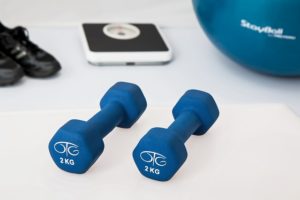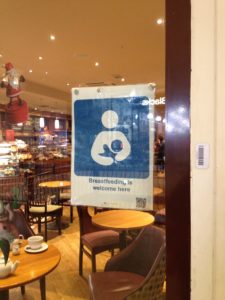Local breastfeeding drop-ins – Funding Crisis – we need you to help us NOW – If you would like to support our case for ongoing funding – please do NOW make contact by email with those who have influence over these decisions – details are below.
When our 2 year grant funding finishes at the end of this month we have no ongoing funding for our breastfeeding drop-ins in Andover and Basingstoke. For the last 6 months we have been working with commissioners at the CCG but were very disappointed to find out two weeks ago that they do not plan to change the way they commission maternity services to include the breastfeeding drop-ins. (The term “commissioning” means buying services – using money allocated by central government).
Our recent evaluation of the 479 women who registered last year at one of our drop-ins, shows us that women feel that this service is different and more specialised than what is generally on offer to them. If you would like a copy of the evaluation please email us (contact at end of this letter).
We are continuing to negotiate positively with those in a range of organisations who have a responsibility for supporting women to breastfeed in Hampshire. In fact this is part of the problem – as there is no single organisation responsible.
If you would like to support our case for ongoing funding – please do NOW make contact by email with those who have influence over these decisions – details are below.
We would appreciate it if you could copy Fiona in to any emails you do send. Fiona Robertson: fiona@hampshirebfcs.co.uk
If you have used our drop-ins, you might like to include your own experience of using our service and why it was different from the service you received elsewhere – the commissioners believe they are already paying for enough breastfeeding support without our drop-ins – do you agree? If not, please tell them why. The cost of commissioning our drop-ins is about the same as the cost of employing one nurse or midwife; i.e. a tiny fraction of the overall CCG budget.
We have included a range of people you may consider emailing – these are all people who hold influence over how Department of Health money is spent in Hampshire.
For your ease of copying and pasting here is the list of email addresses:
Sally.Pastellas@hampshire.nhs.uk
Nicky.Adamson-Young@southernhealth.nhs.uk
+ your MP and your local councillor.
The benefits of breastfeeding and some key information about how the NHS saves money when women breastfeed follows after the email addresses.
Key organisations and people you may like to contact
North Hampshire Clinical Commissioning Group (CCG)
The CCGs are the fairly new groups that are run by GP practices to commission (ie purchase) all the services patients need.
These are the local CCGs aims:
■ being open and accountable to our patients and communities, ensuring they are at the heart of everything we do
■ understanding our population and addressing inequalities so that services are in place to meet needs
■ planning services that best meet those needs now and in the future
■ aiming to secure the right care in the right place at the right time and at the right price
Dr Sam Hullah, Chief Clinical Officer of North Hampshire Clinical Commissioning Group and chair of the Clinical Cabinet. Dr Hullah is responsible for leading on decisions about how the CCG budget is spent and on which services. Why not let him know what you think should be a priority?
Sally Pastellas – Senior Commissioning Manager for maternity and children – North Hampshire Clinical Commissioning Group – Sally has worked with us over 6 months looking at the service we provide and put the case to the clinical cabinet to consider funding the drop-ins which was rejected. The letter confirming this said: “North Hampshire CCG is committed to improving breast feeding rates for local women and will continue to look at initiatives that will support this commitment.”
Sally.Pastellas@hampshire.nhs.uk
Dr Amanda Britton, Vice Chair of the CCG clinical cabinet and also a GP at The Hackwood surgery. Amanda is aware of the service we offer as her surgery is very close to the Brookvale drop-in.
Hampshire County Council:
Janet Hoff – Children’s Services Commissioner – Janet leads the team that commissions Action for Children (the Children’s Centres) to deliver services to families including breastfeeding. It was a grant from Children’s Services that funded the drop-ins for their first year.
Ruth Milton – Director of Public Health, Hampshire – Public health commission services and have a responsibility to promote and support breastfeeding for improved health outcomes for resident of Hampshire. It was a Health and Wellbeing grant from public health funds that funds the drop-ins for the second year (until the end of May).
Local Councillors – “Councillors decide the budgets and policies for the vital local services provided by Hampshire County Council.” You might like to tell yours what you think HCC should be spending local money on – the list is here and ask them to contact Janet Hoff and Ruth Milton.
http://www3.hants.gov.uk/yourcountyc…/findyourcouncillor.htm
Southern Health
Southern Health currently commissions all of the health visiting service.
Nicky Adamson-Young – Divisional Director for Children and Families
Nicky has visited our drop-in at Whitchurch where we run alongside the health visitor clinic and a stay and play session run by the Children’s Centre – she commented that this three way partnership was regarded as a model of best practice for supporting families.
Nicky.Adamson-Young@southernhealth.nhs.uk
Hampshire Hospitals – Midwifery
Caroline Brunt, Associate Director of Midwifery and Women’s Health & Deputy Chief Nurse – Caroline has supported our discussions with the CCG over the last 6 months and has agreed to contribute financially if other parties with a responsibility for breastfeeding also contribute.
Your MP – parliament is currently dissolved for the election
Likely to be Maria Miller in Basingstoke and Kit Malthouse (North West Hampshire including Overton and Whitchurch) kit@kitmalthouse.com We don’t have information about Andover at this stage
Information about our drop-ins from our evaluation completed last week that you may like to use:
In the last 12 months in Andover and Basingstoke:
1.Of the mothers registered with Andover and Basingstoke GPs who initiated breastfeeding, 17.6% registered at one of our drop-ins
2.474 women registered at a drop-in in the last 12 months and there were 1228 visits (women often return a second or third time either with a complex issue or with a different issue at a later stage) To run the drop-ins in Basingstoke and Andover for 12 months costs about the same as to employ one nurse or midwife for one year.
3.At first postnatal visit to a drop-in, 51% of babies are under 4 weeks
4.93% of mothers reported that their breastfeeding issues were fully or partially resolved as a result of attending one of the drop-ins and 87% reported that their confidence in breastfeeding improved as a result of attending.
5.At 6 weeks, 84% of the babies whose mothers received our support were exclusively breastfed, compared to 38.3% for North Hampshire CCG area
Evidence that supporting breastfeeding effectively saves the NHS money:
1.Breastfeeding initiation rates for North Hampshire are just under 80%, yet at 6-8 weeks less than half of mothers (48% Wessex Area CCGs, NHS England 2015) are giving any breastmilk to their babies.
2.86% of mothers who stop breastfeeding in the first 2 weeks report that they would have liked to breastfeed for longer (McAndrew, F. et al. 2012)
3.UNICEF UK commissioned the report “Preventing Disease and Saving Resources” (2012) and the report findings show that for just 5 illnesses, moderate increases in breastfeeding would translate in to NHS cost savings of £40 million and a reduction in hospital admissions and GP consultations.
4.The NHS Institute for Innovation and Improvement estimated an average overnight stay for a patient in an NHS hospital was £225 (2008) and the 2013 Units Health and Social Care report from the Personal Social Services Research found that an 11.7 minute trip to the GP costs the NHS £45 and £27 for a 7.1 minute telephone consultation with a GP. Babies in the UK who are not breastfed are five times as likely to be admitted to hospital in the first year of life with gastrointestinal illness (Jones 2013).
The UNICEF report concludes: “Investment in effective services to increase and sustain breastfeeding rates is likely to provide a return within a few years, possibly as little as one year.”
If you would like to get a copy of our evaluation or offer any further support please contact us:
Sarah Crowdy: sarah@hampshirebfcs.co.uk
Mindy Noble: mindy@hampshirebfcs.co.uk
Fiona Robertson: fiona@hampshirebfcs.co.uk


